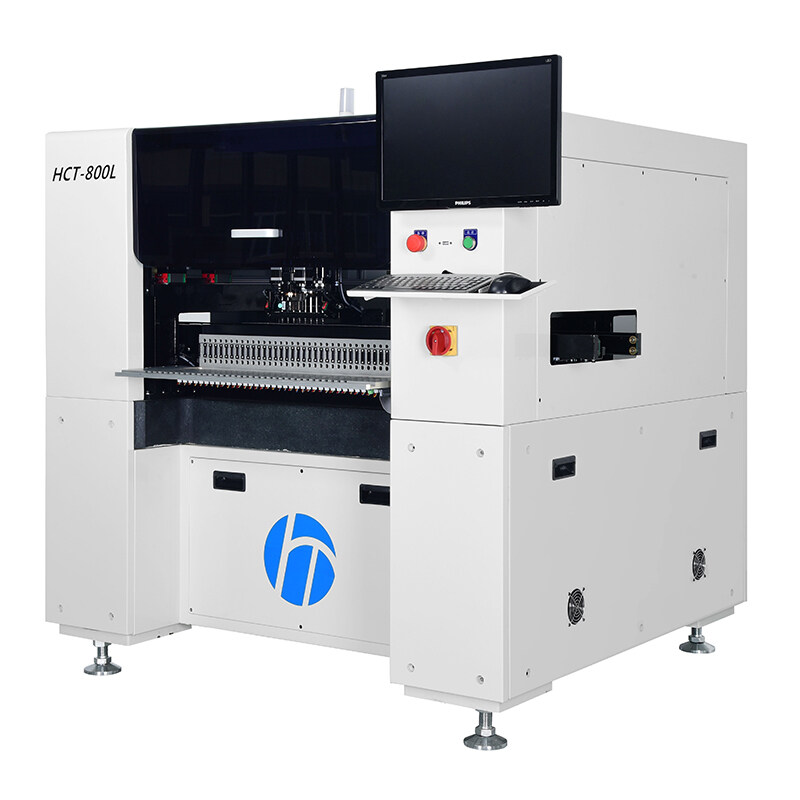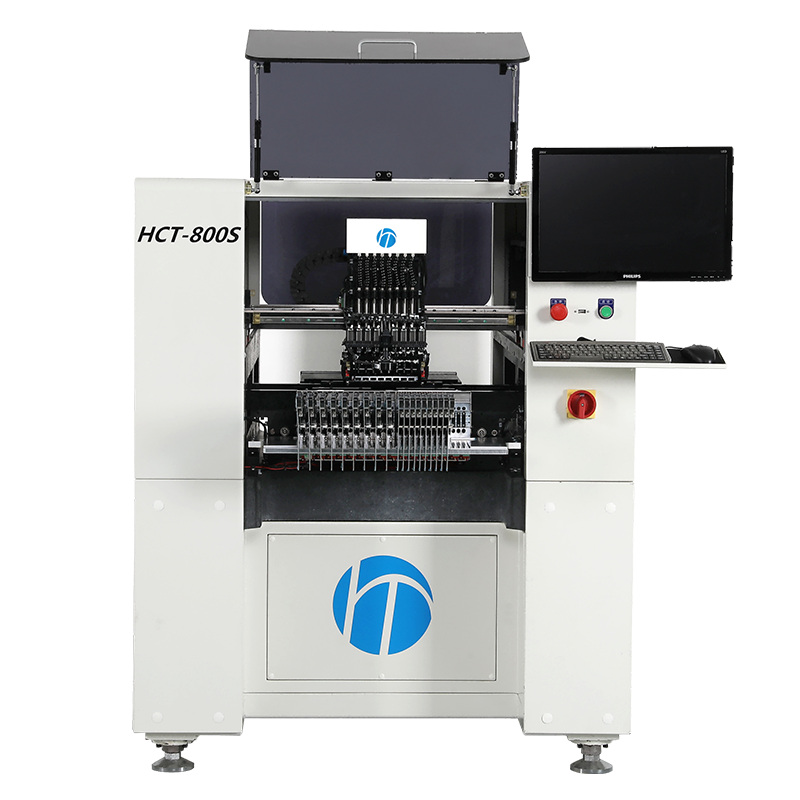Error de formato de correo electrónico
emailCannotEmpty
emailDoesExist
pwdLetterLimtTip
inconsistentPwd
pwdLetterLimtTip
inconsistentPwd


The Ultimate Guide to Universal SMT Equipment
When it comes to the world of electronics manufacturing, Surface Mount Technology (SMT) plays a pivotal role. At the heart of this technology lies the universal SMT equipment, a crucial component for assembling electronic circuits. This blog post aims to delve deep into the intricacies of universal SMT equipment, shedding light on its importance, functionality, and the reasons why it's indispensable in modern electronics manufacturing.
What is Universal SMT Equipment?
Universal SMT equipment refers to a category of machines used in the surface mount technology process to place electronic components onto printed circuit boards (PCBs). These machines are termed "universal" due to their versatile nature, capable of handling a wide range of component types and sizes. They are designed to provide high precision and efficiency, making them a backbone of the electronics manufacturing industry.
Key Features of Universal SMT Equipment
Universal SMT equipment boasts several key features that make it stand out:
Versatility: Capable of placing a diverse array of components, from tiny resistors to large integrated circuits.
Precision: High accuracy in component placement, which is critical for the functionality of the final product.
Speed: Fast operation to keep up with the high demands of modern manufacturing processes.
Flexibility: Easily adjustable settings to accommodate different types of PCBs and components.
The Role of Universal SMT Equipment in Electronics Manufacturing
The role in electronics manufacturing cannot be overstated. These machines are essential for the assembly of PCBs, which are the foundational building blocks of electronic devices. By accurately placing components onto PCBs, the SMT equipment ensures that electronic devices function correctly and reliably.
Types of Universal SMT Equipment
The SMT equipment comes in various forms, each designed to perform specific tasks within the SMT process. Here are some of the main types:
Pick and Place Machines
Pick and place machines are a core component. These machines pick components from feeders and place them onto the PCB with high precision. They are often equipped with vision systems to ensure accurate placement.
Reflow Ovens
Reflow ovens are used to solder the components onto the PCB. After the pick and place machine positions the components, the PCB passes through the reflow oven, where the solder paste melts and bonds the components to the board.
Stencil Printers
Stencil printers apply solder paste to the PCB before the components are placed. This step is crucial as it ensures that the solder joints are strong and reliable.
Inspection Systems
Inspection systems are used to verify the quality of the assembled PCBs. These systems can be optical or X-ray based and are essential for detecting any defects or misalignments.
Benefits of Using Universal SMT Equipment
Investing in the SMT equipment brings numerous benefits to electronics manufacturers. Here are some of the most significant advantages:
Enhanced Production Efficiency
The SMT equipment is designed to operate at high speeds, significantly boosting production efficiency. This allows manufacturers to meet tight deadlines and keep up with market demand.
Improved Product Quality
High-quality multifunctional SMT equipment ensures precise placement of components, resulting in higher quality products. This reduces the risk of defects and increases the reliability of the final electronic devices.
Cost Savings
By automating the assembly process, the SMT equipment reduces the need for manual labor. This not only cuts labor costs but also minimizes the likelihood of human error, leading to further cost savings.
Flexibility in Production
The SMT equipment offers flexibility, allowing manufacturers to switch between different product lines with minimal downtime. This adaptability is crucial in a market where product lifecycles are becoming increasingly shorter.
How to Choose the Right Universal SMT Equipment
Choosing the right SMT equipment is a critical decision for any electronics manufacturer. Here are some factors to consider:
Production Volume
Consider the volume of production your facility handles. High-speed machines are suitable for large-scale production, while smaller, more versatile machines might be better for lower volumes or prototype development.
Component Compatibility
Ensure that the SMT equipment can handle the types and sizes of components used in your products. This includes checking the machine's feeder capacity and placement accuracy.
Budget
Investing in universal SMT equipment is a significant financial decision. Balance your budget with the need for high quality and reliability. Sometimes, it might be worth investing more upfront to save on costs in the long run.
Maintenance and Support
Consider the availability of maintenance and technical support. Reliable after-sales service can significantly reduce downtime and keep your production line running smoothly.
Future Expansion
Think about your future needs. Choose equipment that can be easily upgraded or expanded to accommodate growing production demands or new technology.
The Future of Universal SMT Equipment
The landscape of electronics manufacturing is continuously evolving, and the SMT equipment is no exception. Here are some trends to watch out for:
Increasing Automation
The push towards full automation is driving the development of even more advanced SMT equipment. This includes machines with AI-driven capabilities for predictive maintenance and real-time quality control.
Miniaturization
As electronic devices become smaller and more compact, the demand for SMT equipment capable of handling tiny components is increasing. This trend is pushing the boundaries of precision and accuracy in SMT technology.
Integration with Industry 4.0
The SMT equipment is becoming more integrated with Industry 4.0 technologies. This includes IoT connectivity, data analytics, and advanced monitoring systems, which enhance efficiency and provide valuable insights into the manufacturing process.
Environmental Considerations
Sustainability is becoming a key focus in manufacturing. Future SMT equipment will likely emphasize energy efficiency, reduced waste, and environmentally friendly materials and processes.
Case Studies: Success Stories with Universal SMT Equipment
To illustrate the impact, let's look at a few case studies:
Case Study 1: XYZ Electronics
XYZ Electronics, a leading manufacturer of consumer electronics, invested in high-quality multifunctional SMT equipment to upgrade their production line. The result was a 25% increase in production speed and a significant reduction in defect rates. This investment allowed XYZ Electronics to meet growing market demands and maintain their reputation for high-quality products.
Case Study 2: ABC Tech
ABC Tech, a startup specializing in IoT devices, faced challenges with the precision placement of small components. By integrating advanced universal SMT equipment, they achieved higher accuracy in assembly, resulting in more reliable products. This improvement played a crucial role in their successful product launch and rapid market penetration.
Case Study 3: DEF Manufacturing
DEF Manufacturing, an automotive electronics supplier, needed to diversify their product range quickly to meet new client requirements. With versatile SMT equipment, they were able to switch production lines with minimal downtime, significantly boosting their agility and competitiveness in the market.
Best Practices for Maintaining Universal SMT Equipment
To get the most out of your universal SMT equipment, regular maintenance is essential. Here are some best practices:
Routine Inspections
Conduct regular inspections to identify any wear and tear or potential issues. This includes checking the condition of feeders, nozzles, and vision systems.
Cleanliness
Keep the equipment clean and free of debris. Dust and contaminants can affect the accuracy and efficiency of the machines.
Software Updates
Regularly update the software to benefit from the latest features and improvements. This also helps in maintaining compatibility with new components and technologies.
Training
Ensure that operators are well-trained in using and maintaining the equipment. Regular training sessions can help keep the team updated on best practices and new functionalities.
Documentation
Maintain detailed records of maintenance activities, inspections, and any issues encountered. This documentation can be invaluable for troubleshooting and planning future maintenance.
Conclusion
Universal SMT equipment is a cornerstone of modern electronics manufacturing, offering unparalleled precision, efficiency, and versatility. By understanding its features, benefits, and best practices, manufacturers can make informed decisions and leverage this technology to enhance their production capabilities. As the industry continues to evolve, staying abreast of the latest trends and innovations in SMT equipment will be crucial for maintaining a competitive edge.

